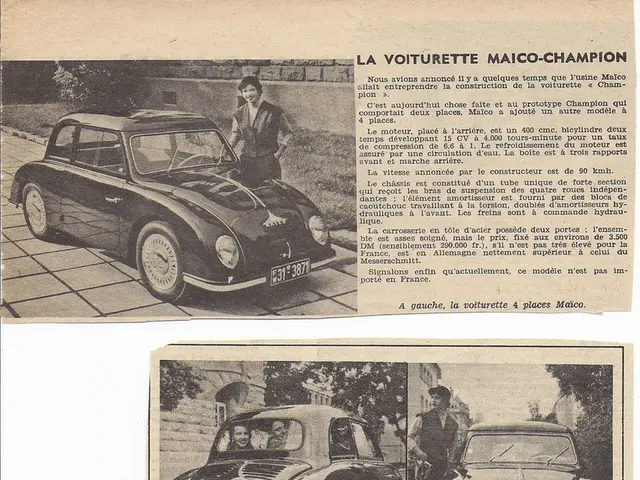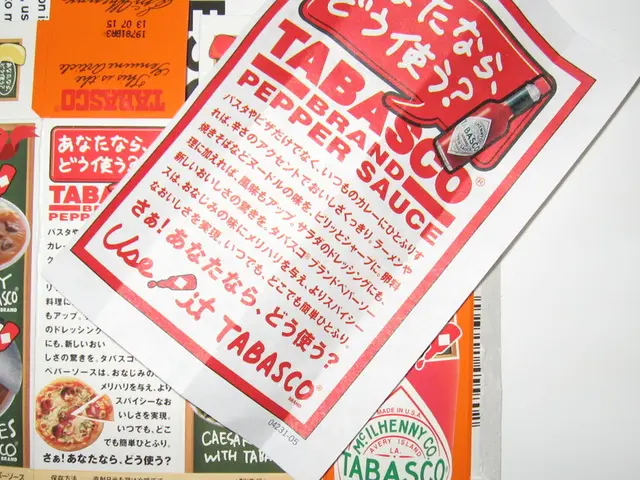Alternative Gluten-Free Cycling Fuel: Power Your Bike Journeys Without Wheat, Barley, or Rye
Get Stoked: Navigate the Gluten-free Cycling Landscape Like a Pro
Cranking out those miles on your bike tries your mettle, but for gluten-free cyclists, navigating the maze of gluten-free fueling strategies can be equally daunting. But fret not, fair pedalers! We got your back, offering a slew of strategies tailored for avoiding wheat while keeping your performance soaring.
For years, both nutritionist and cyclist, I've witnessed firsthand the transformative impact of the right nutritional approach on athletes with celiac disease or gluten sensitivity. You don’t need wheat, barley, or rye to power your pedals effectively.
The Skinny on Gluten:
Gluten is a protein found in certain grains, like wheat, barley, and rye. For those with celiac disease (1% of the population), gluten can wreak havoc on the small intestine and impede nutrient absorption. But worry not, gluten sensitivity is just as prevalent, causing symptoms such as bloating, fatigue, and brain fog that can impact your ride. For cyclists, these digestive issues can be particularly troublesome during training and racing.
Gluten-y Sneaky Spots:
Gluten hides in more places than just bread and pasta. To fuel your cycling effectively, you need to know where it might be lurking, such as:
- Energy bars, gels, and recovery drinks
- Sauces and condiments (soy sauce, dressings, gravies)
- Processed meats (deli meats, sausages)
- Supplements (protein powders, vitamins)
- Beer
- Processed oats
These hidden sources can sabotage your performance without you even realizing. Be vigilant when reading labels and understanding ingredient terminology, as important as tracking your training metrics.
Carb-tastic Without the Wheat:
One common concern for gluten-free cyclists is ensuring they ingest adequate carbs before big events. The traditional pasta dinner becomes challenging, but there are effective alternatives available:
- Rice-based dishes (white rice, rice noodles)
- Ancient grains (gluten-free quinoa, amaranth, buckwheat)
- Root veggies (sweet potatoes, potatoes, and other starchy veggies)
- Legumes (beans, lentils)
Be prepared to boost your consumption of these alternatives to match the carb content of wheat-based products. Gluten-free grains give comparable energy—they just might require different preparation methods.
Getting Your Engine Revving On-Bike:
During-ride fueling presents its own set of challenges for gluten-free cyclists. Traditional energy bars and commercial options can contain gluten or have cross-contamination risks. Here are ways to stay fueled without compromising on digestion:
- Certified gluten-free energy bars: Brands like Bobo’s, KIND, and Larabar
- Homemade rice cakes with sweet or savory fillings
- Fruits (bananas, dates)
- Potato-based options (baby potatoes)
- Gluten-free energy gels
- DIY energy balls (dates, nuts, certified gluten-free oats)
Test these alternatives during training rides before relying on them for important events. Your body needs time to adapt to new fueling strategies, especially during high-intensity efforts.
Refueling After the Ride:
Post-ride recovery nutrition is crucial for training adaptations and preparing for your next session. Without traditional wheat-based recovery meals, focus on these alternatives:
- Rice-based meals (brown rice with protein and veggies)
- Fruit smoothies with gluten-free protein powder
- Gluten-free oats with protein powder, fruit, and honey
- Corn tortillas (tacos or quesadillas with protein)
- Quinoa bowls
The optimal ratio of carbs to protein remains the same whether or not you're consuming gluten. The key is ensuring adequate overall intake to support your training load.
Tips for Gluten-Free Cyclists:
- Plan ahead: Always travel with safe snacks and research food options before trips.
- Read labels religiously: Manufacturers change ingredients frequently.
- Communicate clearly: When eating out, mention your needs clearly to restaurant staff.
- Batch cook staples: Prepare gluten-free grains and snacks in batches.
- Focus on nutrient density: Ensure you get B vitamins, iron, and other nutrients from alternative sources.
Remember, being gluten-free does not mean you'll be compromising your performance or enjoyment of the sport. With careful planning, strategic meal timing, and a focus on whole foods, you can fuel properly for any ride, whether casual or competitive.
For athletes with celiac disease or gluten sensitivity, avoiding gluten could actually improve performance by resolving underlying digestive and inflammatory issues. By embracing the right alternatives and timing, you could find yourself riding stronger than ever on your gluten-free fueling journey.
In the world of health-and-wellness, focusing on fitness-and-exercise and nutrition is paramount, especially for gluten-free cyclists. Navigating the landscape of gluten-free fueling, whether pre-, during, or post-ride, requires knowledge of sources where gluten might be hidden, such as energy bars, supplements, or processed meats. On the flip side, discovering carb-tastic alternatives like rice, root veggies, legumes, and certified gluten-free energy bars can help power your pedals effectively, thus ensuring a gluten-free lifestyle doesn't compromise your performance or enjoyment of the sport.








